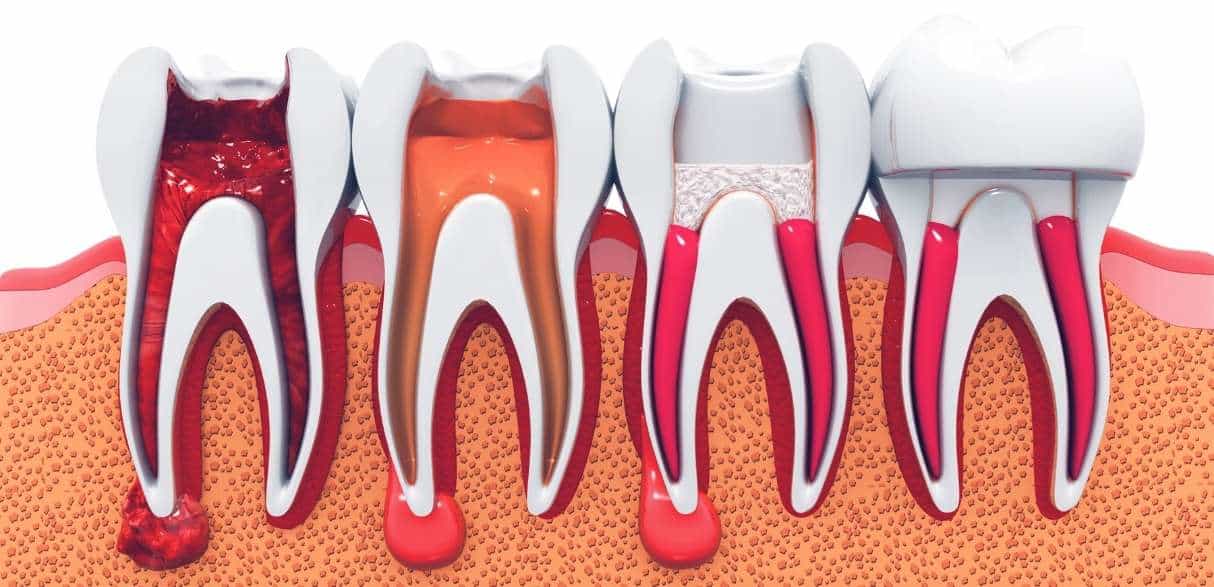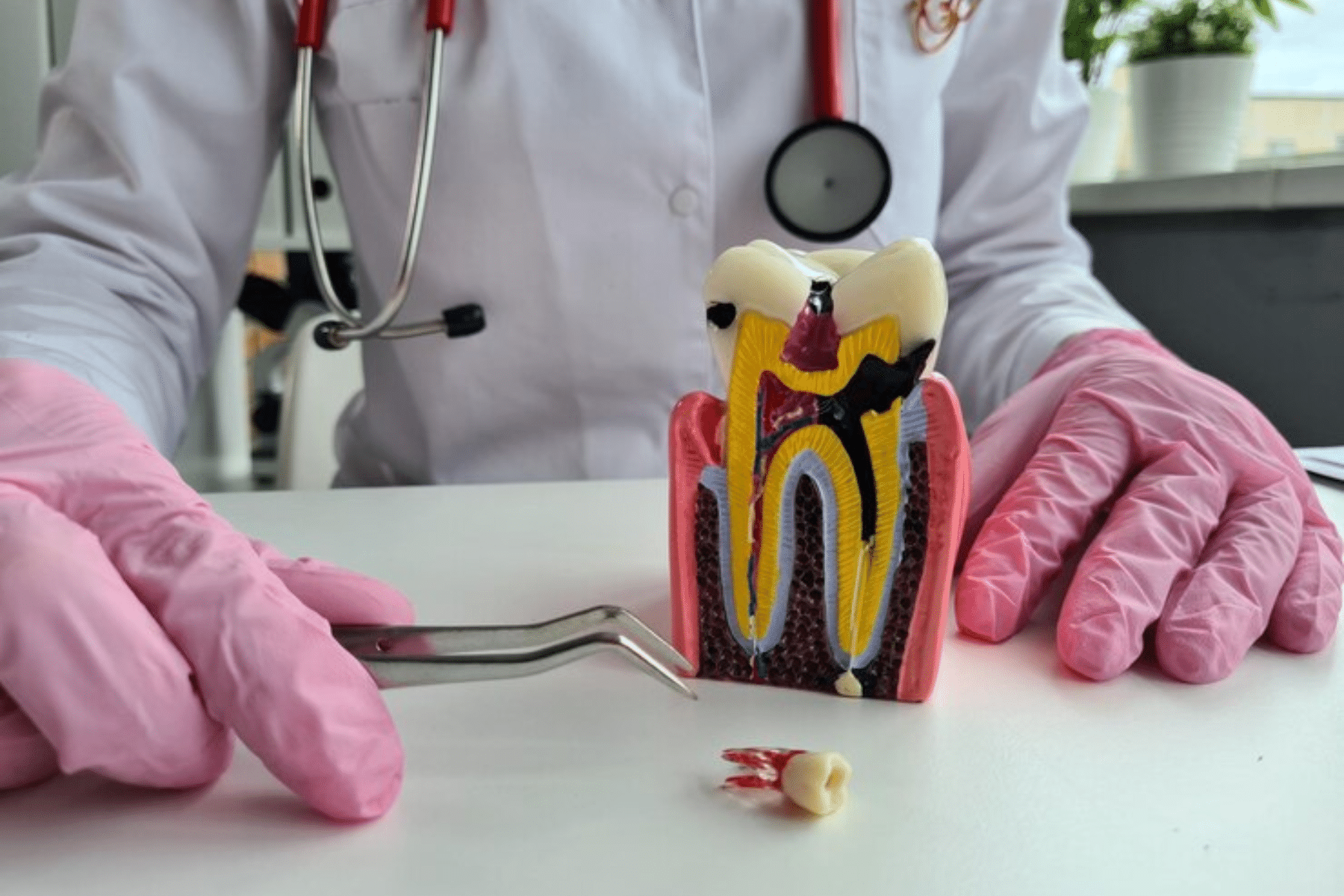245 11th Ave NE Hickory, NC 28601
Dealing with Calcified Canals: When Root Canals Get Tricky?

A root canal is a common procedure to save damaged or decayed teeth. However, some cases can be quite challenging. One such challenge is dealing with calcified canals.
Calcified canals occur when the root canal system becomes narrowed or blocked with calcified tissue. This condition complicates the procedure, making it difficult to clean and fill the canals properly.
Understanding and managing calcified canals is essential for both dental professionals and patients. For professionals, it requires advanced techniques and tools. For patients, it means being informed about the potential complexities of their treatment. Addressing these challenges effectively can ensure better outcomes and preserve tooth health.
What Are Calcified Canals?
Process of Canal Calcification
Calcified canals develop when the interior of a tooth’s root canal becomes narrowed or obstructed by calcified tissue. Over time, the canal walls can thicken, reducing the space available for treatment.
Causes
Several factors contribute to canal calcification. Aging is a primary factor, as natural wear and tear can cause the canal tissues to harden. Trauma to the tooth, chronic conditions like pulpitis, or repeated dental procedures can also lead to calcification.
Symptoms
Signs of calcified canals include increased tooth sensitivity, especially to temperature changes. Patients may also notice difficulty during dental procedures as locating and accessing the canal becomes more challenging. Persistent pain or discomfort in the affected tooth can also indicate canal calcification.
Challenges of Treating Calcified Canals
Difficulty in Accessing Canals
Calcified canals present significant challenges compared to normal root canals. The primary difficulty is locating the narrowed or obstructed canal. Traditional methods may not be effective, and special techniques are required to access the canal space.
Risk of Perforation
Treating calcified canals increases the risk of perforating the tooth. Perforation occurs when instruments accidentally create a hole in the canal wall, which can lead to further complications. This risk requires extra caution during treatment.
Extended Treatment Time
The treatment of calcified canals often takes longer than a standard root canal. The complexity of navigating the narrowed canals demands additional time for careful cleaning, shaping, and filling. This extended duration is necessary to ensure the canal is thoroughly treated and sealed.
Techniques and Tools for Managing Calcified Canals
Advanced Imaging Techniques
When dealing with calcified canals, accurate diagnosis, and effective treatment planning are crucial. Cone Beam Computed Tomography (CBCT) is a game-changing technology in this regard.
Unlike traditional X-rays, CBCT provides three-dimensional images of the entire tooth and surrounding bone structure. This detailed imaging allows dentists to visualize the root canal system in its entirety, including any areas of calcification.
By examining these 3D images, dentists can better understand the extent and location of the calcification. This information is invaluable for developing a precise treatment plan and avoiding potential complications during the procedure.
Specialized Instruments
Negotiating calcified canals requires specialized instruments designed to handle the unique challenges they present. Ultrasonic tips are one such tool. These tips use high-frequency vibrations to gently dislodge and remove calcified tissue from the canal walls. This technique helps to clear the canal without causing excessive damage to the surrounding structures.
Additionally, specialized endodontic files are essential for working in narrow, calcified canals. These files come in various sizes and shapes, allowing dentists to navigate through the constricted spaces effectively. Some files are made from flexible materials that can bend and adapt to the canal’s curves, making them ideal for treating calcified canals.
Magnification and Illumination
Effective treatment of calcified canals relies heavily on visibility. Dental microscopes and other magnification devices are crucial for enhancing this visibility. Microscopes provide high levels of magnification, allowing dentists to see even the smallest details of the root canal system. This clarity is essential for accurately locating and treating calcified canals.
Alongside magnification, proper illumination is equally important. High-intensity lights, often integrated into microscopes, ensure that the canal system is well-lit, reducing shadows and increasing visibility. Together, magnification and illumination enable dentists to perform more precise and effective treatment, minimizing the risk of errors and improving overall outcomes.
Step-by-Step Approach to Treating Calcified Canals
Assessment and Diagnosis
A thorough examination is crucial for treating calcified canals. Detailed imaging, such as CBCT scans, helps in understanding the extent of calcification. Accurate diagnosis is essential for planning the treatment approach.
Creating a Treatment Plan
Tailoring the treatment plan involves addressing the specific challenges posed by calcified canals. This includes selecting appropriate tools and techniques to navigate and treat the narrowed canal effectively.
Executing the Treatment
- Initial Access: Carefully create an access point to the root canal system.
- Canal Negotiation: Use specialized instruments to navigate through the calcified areas.
- Cleaning: Thoroughly clean the canal to remove debris and bacteria.
- Shaping: Shape the canal to prepare it for filling.
- Filling: Fill the canal with a biocompatible material to seal it and prevent future issues.
Dealing with calcified canals can be challenging, but with the right techniques and tools, successful outcomes are possible. Dental professionals should stay updated on the latest advancements to manage these cases effectively. Patients should consult with their dentists if they experience symptoms related to calcified canals. Proper understanding and management of these complex cases can lead to successful treatment and preserved dental health.




